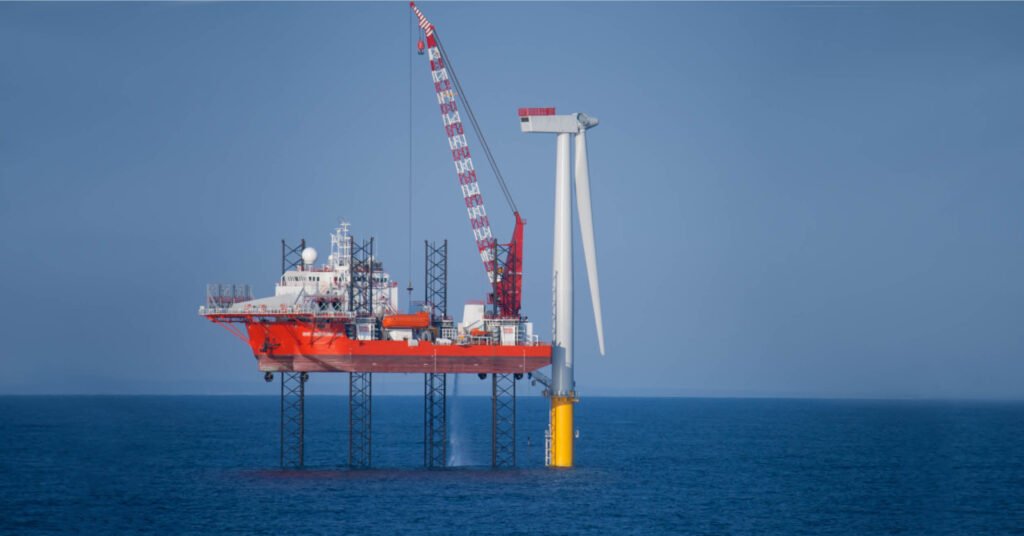Jack-up analysis is a crucial aspect of offshore engineering and construction, focusing on assessing the leg penetration and jack up stability, and understanding the operational risks.
DID YOU KNOW
Our engineers are available 24/7, providing same-day LPA results. We follow a tailored ISO 9001 quality process from data to LPA outputs for wind farm sites. With over 10,000 LPAs worldwide, we offer extensive experience and efficiency.
Leg Penetration Assessment
We use our in-house leg penetration software, compliant with ISO 19905-1:2023, and consider recent advancements such as sand plug formation. Our analysis includes combined V/H loading envelopes and foundation fixity parameters. We offer integrated automation for multi-rig and multi-site assessments, ensuring efficiency and accuracy.

Jack-Up Vessel besides an offshore wind turbine in construction.
Site Wide Zoning and Ground Modelling
- Development of ground models for site wide appraisal based on available geotechnical and geophysical data
- Side Wide Zoning based on Geotechnical, and Geohazards and Risks
- Considering of historical penetration data for back analysis
- Presentation of data in GIS format, Excel and Hadrian Cloud Services
Geohazard analysis and site wide risk appraisal
Site wide risk appraisal in accordance with HSE and ISO considering aspects such as:
- Punch Through
- Partial Penetration
- Layered Soils
- Hang-Up
- Scour
- Available Data Quality
- Spudcan-footprint interaction
Development of risk mitigation strategies for operations
We specialise in developing procedures and risk mitigation strategies, including stomping procedures, spudcan modification recommendations, alternative jacking locations, preload optimization, and ground improvement. Additionally, we provide both preliminary and detailed design services for gravel pads used in jack-up operations.

Very large offshore wind farms being built in the dutch part of the North Sea
Leg Extraction Estimates
- Assessment of leg extraction forces for short term and long term operations
- Jetting volume/flow rates estimates to assist with operations
Spudcan Structure Interaction Study FEA
- Advanced spudcan structure interaction analysis, using Abaqus for large strain and PLAXIS for small strain, to model spudcan penetration and punch through capacity.
- Understand the risks to adjacent structures, such as foundation piles, cables, and pipelines with stress distributions.
- Estimate heave volumes to assess for stresses on seabed infrastructure with suitable mitigations developed.